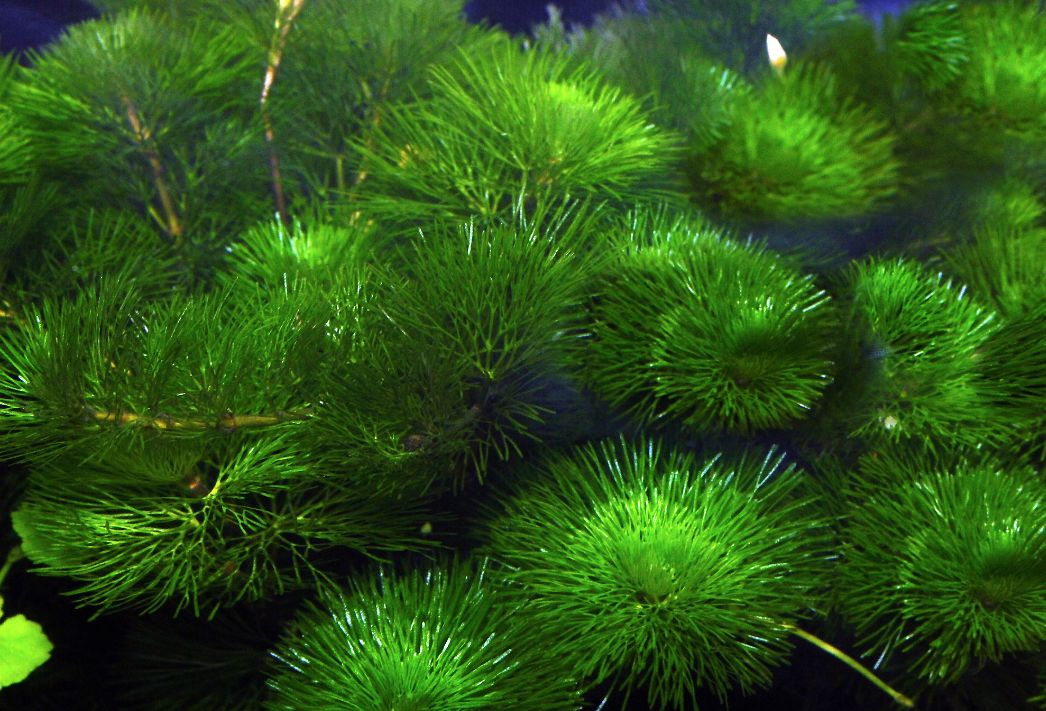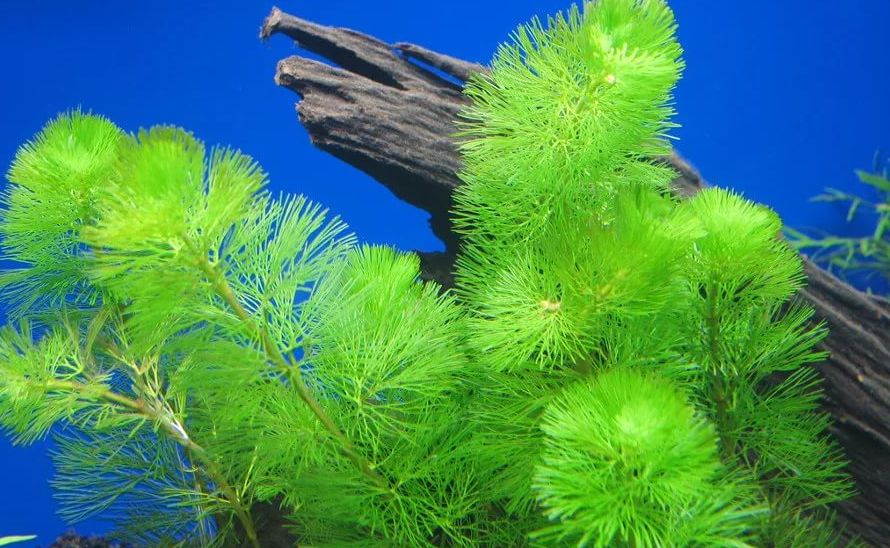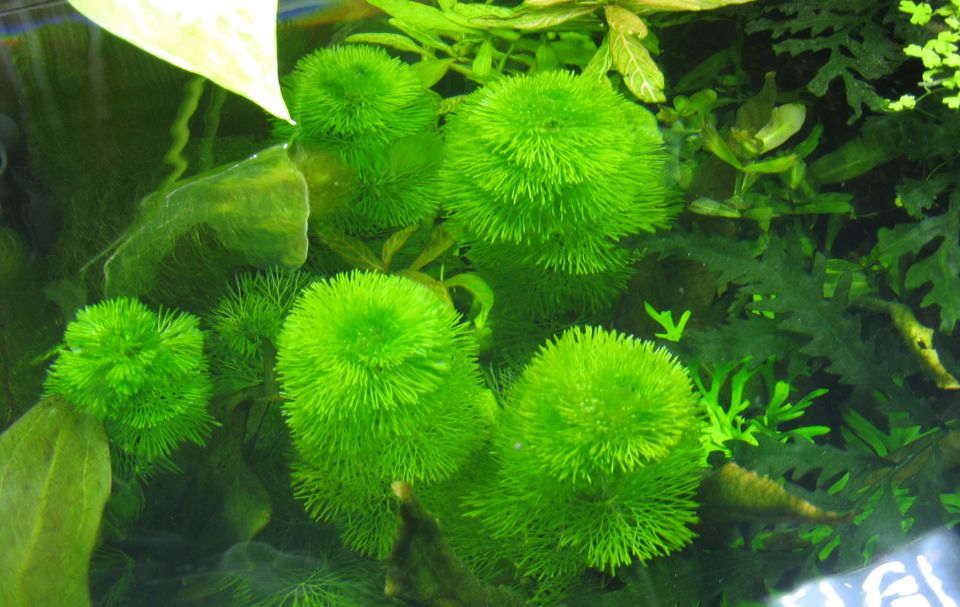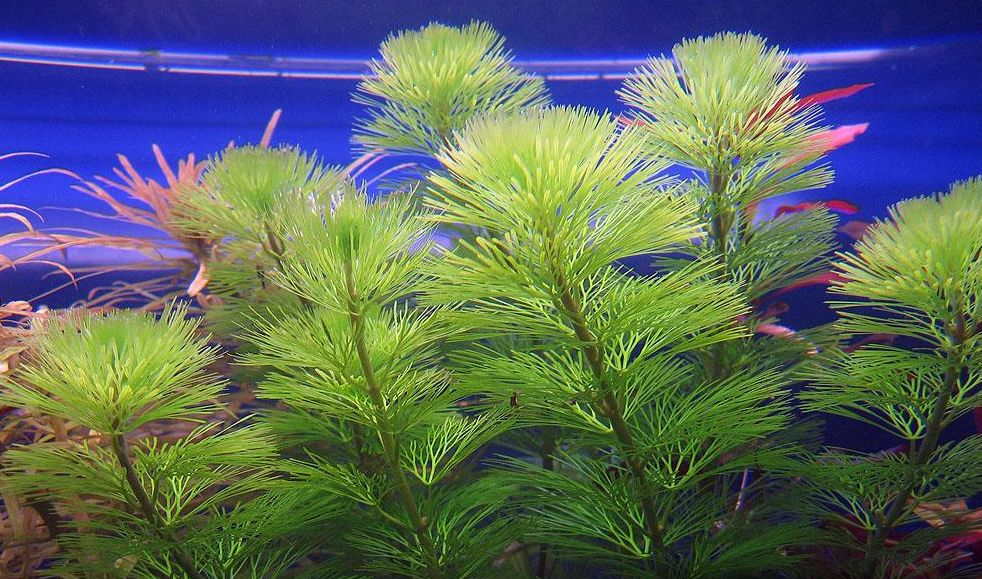Cabomba caroliniana, commonly known as Carolina fanwort or green cabomba, is a captivating aquatic plant native to the southeastern United States. Belonging to the Cabombaceae family, this plant is highly esteemed in the aquarium hobby for its striking appearance and easy maintenance. Its long, delicate stalks and lush green foliage make it a standout choice for both beginners and experienced aquarists.
Known for its versatility, green cabomba is one of the most popular and widely used long-stalked aquarium plants. While there are five distinct species of cabomba, along with newly developed hybrids, they all share similar growing requirements. The variations among these species are mainly in their appearance and growth rates, but their care needs are almost identical.
This adaptability makes green cabomba a great addition to various aquarium setups. It thrives in a range of conditions, making it a reliable choice for those looking to enhance their aquatic landscapes with a touch of elegance and vibrancy.

Contents
Habitat in the wild and invasiveness
Cabomba caroliniana, commonly known as green cabomba, originally thrived in a diverse range of habitats from North Brazil and Guyana to the southeastern United States, including Florida, Texas, and North-West Virginia. This aquatic plant can be found in both lentic and lotic waters, growing at depths ranging from 30 cm to 1.5 meters. In the wild, green cabomba flourishes in freshwater environments such as ponds, lakes, and slow-moving streams, preferring calm or still waters with moderate nutrient levels. It is also capable of tolerating slightly brackish conditions.
Introduced to Europe in 1906, green cabomba quickly became a popular choice for aquarium enthusiasts and has remained a staple in amateur tanks ever since.
The plant’s ability to propagate is quite remarkable. It can spread not only through water flow but also via various animals, with even a small fragment of its stem or leaf being sufficient to establish a new colony. In North America, green cabomba has continued its expansion, successfully colonizing many central and northern states and approaching the southern regions of Canada.
Its invasive nature poses significant ecological challenges. The plant’s long stems can grow up to one meter, obstructing water channels, stream beds, and navigation routes. This growth can hinder boating, fishing, and suppress local flora. Efforts to control its spread through herbicides or other chemical methods have proven ineffective, leading to regulations in Canada that prohibit the sale of green cabomba to aquarists.
For those who do cultivate Cabomba caroliniana, the plant thrives in bright light and nutrient-rich conditions. It prefers open water with a silty bottom and is remarkably adaptable to varying physical and chemical water parameters, making it a resilient and vigorous species.

Description
Cabomba is interesting as an ornamental aquarium plant due to its exclusive appearance and simple cultivation process. Its stem is smooth, fleshy and branchy about 1.5 m long; the leaves are fan-shaped and resemble a bottle brush. Carolina fanwort has delicate, feathery leaves that are bright green in color. The leaves are divided into fine, thread-like segments, giving the plant a feathery appearance. It has a slender stem that can grow up to several feet in length.
They are dark green from top and light green from below, grow in front of each other; they are about 5 cm wide. Due to this shape of its leaves vegetation looks very fragile, delicate and gorgeous.
Stems and leaves get their maximum size close to the water surface, where they expand and shadow the area under them. Under water stem grows vertically and then it starts trailing along the water surface parallel to the water flow.
In the wild when the plant reaches water surface, cabomba forms real small floating leaves with a solid lamina and it has white flowers that look like miniature flowers of wild cherry.
| Aspect | Description |
|---|---|
| Common Name | Carolina fanwort, Green cabomba |
| Family | Cabombaceae |
| Scientific Name | Cabomba caroliniana |
| Native Range | Southeastern United States |
| Plant Type | Aquatic |
| Leaf Description | Delicate, feathery, bright green leaves |
| Stem Description | Slender, can grow several feet in length |
| Aquarium Use | Popular aquarium plant for its aesthetic appeal |
| Growth Rate | Fast-growing |
| Lighting Requirements | Bright lighting required for optimal growth |
| Nutrient Requirements | Requires nutrient-rich water and regular fertilization |
| CO2 Requirements | Benefits from a consistent supply of carbon dioxide (CO2) |
| Water Temperature Range | 72-82°F (22-28°C) |
| pH Range | 6.0-7.5 |
| Propagation Method | Stem cuttings, replanting in substrate or allowing it to float |
| Invasive Potential | Can become invasive in some regions, careful management required |
| Ecological Impact | May outcompete native aquatic plants and disrupt ecosystems |

Difficulties in keeping
This plant is celebrated for its lush, ornamental foliage, rapid growth, and adaptability to various tank conditions. Its vibrant, fan-like leaves create a stunning visual effect, making it an excellent choice for enhancing the aesthetic appeal of any aquarium.
Green cabomba’s robust growth contributes significantly to the aquarium’s ecosystem. It plays a crucial role in the nutrient cycle, helping to maintain water quality by absorbing excess nutrients. Its dense, bushy structure provides ideal hiding spots for juvenile fish and serves as a valuable spawning substrate for many species.
This plant thrives in tanks of any size but is best positioned in the background, where it can form a beautiful, verdant curtain. Green cabomba maintains its lush appearance and continues to grow uniformly throughout the year, making it a reliable and attractive choice for both novice and experienced aquarists.
Care and keeping in a tank
Water parameters
Green cabomba (Cabomba caroliniana) is known for its adaptability to a range of water conditions, making it a versatile choice for many aquariums. It thrives in water temperatures between 72 to 82°F (22 to 28°C) and prefers a pH range of 6.0 to 7.5. Despite these ideal conditions, the plant has shown impressive resilience over nearly a century of cultivation in aquariums.
While green cabomba adapts well to different water parameters, its growth can be affected by water hardness. In harder water, the plant tends to grow more slowly, and its leaves may be smaller. Nevertheless, it continues to perform well in both moderately warm tanks with temperatures around 64 to 72°F (18 to 22°C) and in tropical setups with temperatures exceeding 75°F (24°C). This flexibility makes it a reliable and attractive addition to various aquarium environments.
Lighting
Compared to other aquatic plants, green cabomba (Cabomba caroliniana) is less demanding regarding light intensity, but it still requires adequate lighting to thrive. While it can tolerate lower light levels, providing moderate to high light intensity is essential for its optimal growth and appearance.
For best results, aim for 2-3 watts per gallon of fluorescent lighting or 3-5 watts per gallon of LED lighting. LED lighting is particularly beneficial due to its energy efficiency, long lifespan, and adjustable intensity. This allows you to tailor the light spectrum and intensity to meet the specific needs of your cabomba.
A photoperiod of 8-10 hours of light per day is recommended to simulate a natural day-night cycle and support the plant’s metabolic functions. Insufficient light can lead to slower growth, leggy stems, and pale leaves. Inadequate lighting causes the plant to elongate, reduce in leaf size, and exhibit a yellowish tint. The recovery process from poor lighting is slow compared to the rapid growth of the plant under optimal conditions.
Both natural and artificial light sources are suitable for illuminating a tank with green cabomba. However, ensuring proper lighting intensity is crucial to maintain the plant’s vibrant appearance and health.
Substrate
Fragile root system develops better in a substrate of large grained river sand or small sized pebbles (2-4 mm large). In the substrate with larger grains it is more challenging for creeping roots of the old plant to develop. Fine-grained substrates, such as sand or small-sized gravel, allow the plant’s delicate roots to anchor properly without impeding their growth or causing damage.
Aim for a substrate depth of around 2-3 inches (5-7.5 cm) to provide ample space for root development. This depth allows the roots to spread out and anchor securely while still accessing nutrients from the substrate.
Fertilizers
A lack of proper nutrition and light can significantly diminish the appearance of cabomba (Cabomba caroliniana), so it’s crucial to use liquid fertilizers to ensure the plant’s health and vibrant look.
Cabomba thrives with a balanced supply of macronutrients: nitrogen (N), phosphorus (P), and potassium (K). Choose liquid or powdered fertilizers specifically designed for aquarium plants that provide these essential nutrients.
In addition to macronutrients, cabomba benefits from micronutrients such as iron (Fe), manganese (Mn), and zinc (Zn), which are vital for its overall growth and coloration. Opt for a comprehensive aquarium plant fertilizer that includes a range of these essential micronutrients.
Always follow the manufacturer’s recommendations for dosage and application to avoid over-fertilization, which can harm the plant and disrupt the tank’s ecosystem. Regularly monitor the plant’s condition and adjust the fertilization schedule as needed to maintain optimal health and appearance.
CO2
Cabomba caroliniana thrives with a consistent supply of carbon dioxide (CO2) in addition to fertilizers. If you are injecting CO2 into your aquarium, maintaining a balanced environment is key. Ensure that CO2 levels, lighting intensity, and nutrient supply are properly balanced to support optimal plant growth. An imbalance among these factors can lead to nutrient deficiencies or excesses, potentially hindering the plant’s development and overall health.

Compatibility
Thickly growing cabomba is a perfect shelter as well as a rich feed for many fish species juveniles. Lacelike thicket only at first sight seems to be easy to get into, while predators usually don’t go there. However, fish juveniles and youth like this place – there they have space to swim and there are many microorganisms they can eat.
For climbing perch species fragments of the leaves are perfect construction material to strengthen their foam nest. For characins and small carps this is an ideal medium for spawning.
Propagation
To propagate green cabomba in a tank, you can use stem or rootstock cuttings. Here are some effective methods and tips for successful propagation:
- Stem Cuttings:
- Solid Stems: Cuttings taken from solid stems, whether separated from the rootstock or with a part of it, establish quickly and grow rapidly in their new location.
- Dividing Stems: For slower propagation, divide stems into sections with 5-6 verticils (whorls of leaves) and plant them, burying 2-3 verticils into the substrate. This method takes a bit longer but is effective for generating new plants.
Regular trimming of the top can also encourage branching and can provide additional planting material.